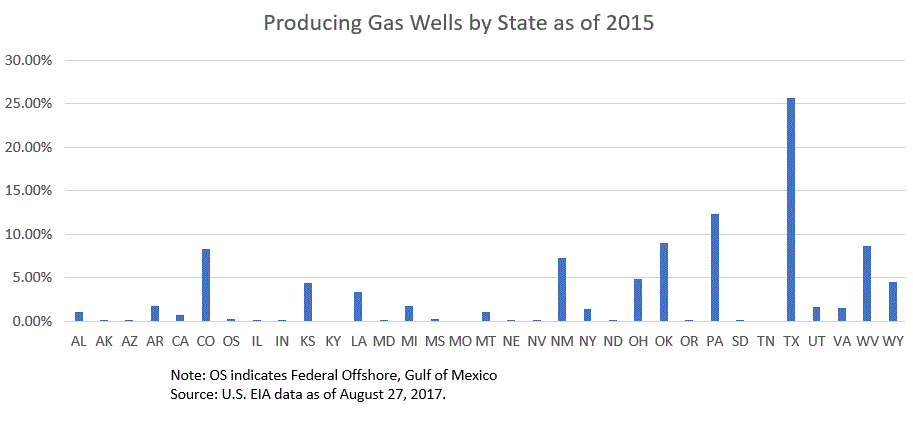Natural Gas Perspective and Units August 27, 2017
Natural Gas Units and Conversions
Natural gas can be reported in in many different ways. The following is a guide to help understand the units and how to convert from one unit to another.
Units typically used in natural gas:
Mcf – 1,000 cubic feet
MMcf – 1,000,000 cubic feet
Bcf – 1,000,000,000 cubic feet
Tcf – 1,000,000,000,000 cubic feet
MBtu – 1,000 British thermal units
MMBtu – 1,000,000 British thermal units
(note: a British thermal unit is the amount of heat required to raise the temperature of one pound of water by one degree Fahrenheit.)
Therm—One therm equals 100,000 Btu, or 0.10 MMBtu
There is some confusion regarding the use of M and MM for the reporting of natural gas. The M in Mcf stands for 1,000. M is often confused for “million” however it is only 1,000 when reporting on natural gas. To get to millions, there must be a second M, so MMcf, to get to millions.
This convention comes from the Roman numeral system. In Roman numerals 1,000 is M and 1,000,000 is M with a line above it which is more easily written as MM. MM can be considered as 1000*1000 = 1,000,000.
The conversion of BCFE is also helpful to understand to allow the reported reserves to be shown in either gas or oil. BCFE is Billion Cubic Feet Equivalent. This is a conversion to estimate gas or oil. The conversion factor is 6Mcf is approximately equivalent to one barrel of oil on an energy to energy basis.
How Much Gas is a Lot of Gas?
It is important to get an idea of how much gas is a lot of gas or a little gas. What is a good gas well and what is a good gas field? Putting things into perspective will be helpful for understand how much gas is a lot of gas.
Sizes of Gas Fields
The largest discovered non-associated gas field in the world is the South Pars field which spreads across Qatar and Iran. The estimated recoverable reserves for the field are 1,235,000,000,000,000 cubic feet or 1,235 Tcf. The Hugoton gas field, also non-associated, stretching across part of Kansas, the Oklahoma pan handle, and into Texas in the United States has estimated recoverable reserves for the field at 81,000,000,000,000 cubic feet or 81 Tcf. The field in Qatar and Iran is a little over 15 times the size of the Hugoton field in the United States.
Consumption of Natural Gas
According to the United States Energy Information Administration, the total natural gas consumption for 2016 was 27,490,647,000,000 cf or 27,490.647 Bcf. Of that, residential consumption was 4,391,507,000,000 cf or 4,391.507 Bcf. This accounts for 16% of total consumption.
Colorado residential used 122,273,000,000 cf or a little less than 3% of total United States residential use.
The Hugoton field has enough gas to fuel Colorado for approximately 662 years assuming today’s usage and no growth.
Typical Natural Gas Well Performance and Where Natural Gas is Located
Average natural gas wells produce between 250 and 350 Mcf or 250,000 and 350,000 cubic feet per day. Nationwide, the United State Energy Information Administration reports that there are approximately 555,364 producing gas wells as of the close of 2015.
Texas is the clear leader in the total number of producing gas wells with a little over 25% of the total United States gas wells. Pennsylvania is second with a little over 12% of the wells. Oklahoma and Colorado follow closely behind with a little over 8% each. See the chart below for the full breakdown.

